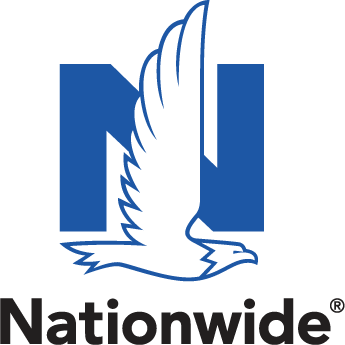Nationwide’s decision to not renew 10,525 homeowners’ insurance policies in Eastern North Carolina could be a warning sign for the state’s insurance market, an expert told The News & Observer.
“I’m thinking about this more like a possible canary in the coal mine, or a concern that’s raising flags today but probably isn’t necessarily raising rates for consumers on a large scale,” Ben Collier, an assistant professor at Temple University’s Department of Risk, Insurance and Healthcare Management, told The News & Observer.
Nationwide’s decision to not renew the policies was based on a review of climate severity, weather-related losses and the state of the reinsurance market, according to Jason Tyson, a spokesman for the N.C. Department of Insurance. The company used its internal hurricane hazard assessment tool to decide against renewing 5,781, or more than half, of the polices.
While much attention on Nationwide’s non-renewals has focused on the 890 properties affected across Dare and Hyde counties, more of the affected homes are located in the coastal plain and in other storm-impacted areas near the coast.
Pitt County has the most non-renewals, with 1,324. Craven County, which saw significant damage during Hurricane Florence, is second, with 938, followed by Wayne County’s 931 affected properties.
Nationwide’s action was first reported by The Virginian-Pilot in Norfolk.
Nationwide told the N.C. Department of Insurance in February that the policies were being dropped because the company had assessed and rebalanced its portfolio “based on risk.”
In a recent statement, Nationwide wrote, “Inflation and market disruptions impact insurance just like they do any other business. In many instances, this means we are updating our rates. It also means we are being more selective about where we write certain amounts of business and the amount of overall risk we are willing to write. These are tough decisions, but the right decisions that will enable us to be here long term for our customers.”
Nationwide and its affiliates write about 7.3% of North Carolina’s homeowners insurance policies, according to data from the N.C. Department of Insurance. That makes it one of the state’s largest holders of homeowners policies, trailing only State Farm, N.C. Farm Bureau and Allstate in terms of market share.
If Nationwide decided to pull out of larger swaths, or leave the state entirely, it could reduce the competition for writing homeowners insurance policies and drive prices up, warned Collier, the Temple professor.
That’s happened with some large insurers in hazard-prone states like California and Florida. It can pose a problem for homeowners and buyers, whose mortgages typically require them to carry insurance on the property.
“There’s a lot of longer-term concerns that if something like this happened with Nationwide on a large scale in North Carolina, it could fundamentally change how people buy their insurance there,” Collier said.
Increased wind and hail losses from storms like Matthew and Florence played a role in the N.C. Rate Bureau’s requested 24.5% increase in homeowners insurance rates in 2021. Insurance Commissioner Mike Causey ultimately negotiated that to an average 7.9% increase, with higher hikes in certain places like the Triangle and in coastal areas.
As losses from disasters like large hurricanes and wildfires have mounted in recent years, the cost of reinsurance — the insurance that covers insurance companies — has spiked. Earlier this year, risk analysis firm Guy Carpenter reported that reinsurance rates on property in the United States were at their highest levels in 17 years, increasing between 20% and 50% ahead of a key July 1 renewal date.
North Carolina saw two widespread hurricanes with 2016’s Hurricane Matthew and 2018’s Hurricane Florence. Since then, most of the largest storms have been concentrated in Florida or on the Gulf Coast. Still, Collier said, damage from those storms and the costs of rebuilding could be shifting how Nationwide and its models think about a storm-prone place like North Carolina, both in terms of what policies to write and how much premiums should cost.
“Even if we haven’t had a terrible event in North Carolina in the last five years, what’s happening in other states is still informing us here,” Collier said. “The other thing we have to worry about is the view of the risk may additionally increase if there’s another severe event in North Carolina.”
Should another large storm hit North Carolina, Collier warned, other insurers’ views of risk could shift toward those held by Nationwide, pushing insurance prices up in hard-hit areas.
Nationwide signaled a willingness to rewrite some of the policies, according to Tyson, if the wind and hail coverage is carried by the North Carolina Insurance Underwriting Association. That’s a group of insurers that act as a “market of last resort” in the state’s coastal areas.
It’s fairly common for insurance companies to seek a different party to carry the highest-risk portions of policies in hazard-prone states, Collier said. In Texas, for instance, the Texas Windstorm Insurance Association offers most wind and hail policies for coastal areas, while the California Earthquake Authority manages more than a million earthquake insurance policies.
“That’s certainly a thing we’re seeing already in places with higher risk for things like wind damage,” Collier said.
In fact, Tyson wrote, many insurers writing policies east of Interstate 95 automatically turn the wind coverage over to the N.C. Insurance Underwriting Association, which is also known as the Beach Plan because of the areas it covers.
“North Carolina has a viable homeowners insurance market, coverage is available and the Beach Plan is robust,” Tyson wrote.
This story was produced with financial support from the Hartfield Foundation and 1Earth Fund, in partnership with Journalism Funding Partners, as part of an independent journalism fellowship program. The N&O maintains full editorial control of the work.













